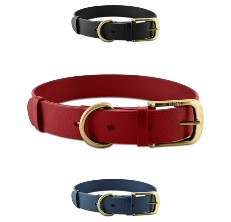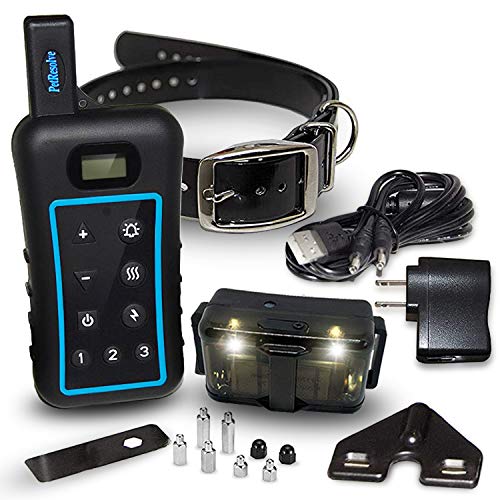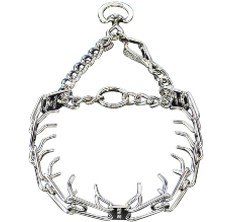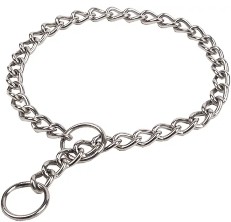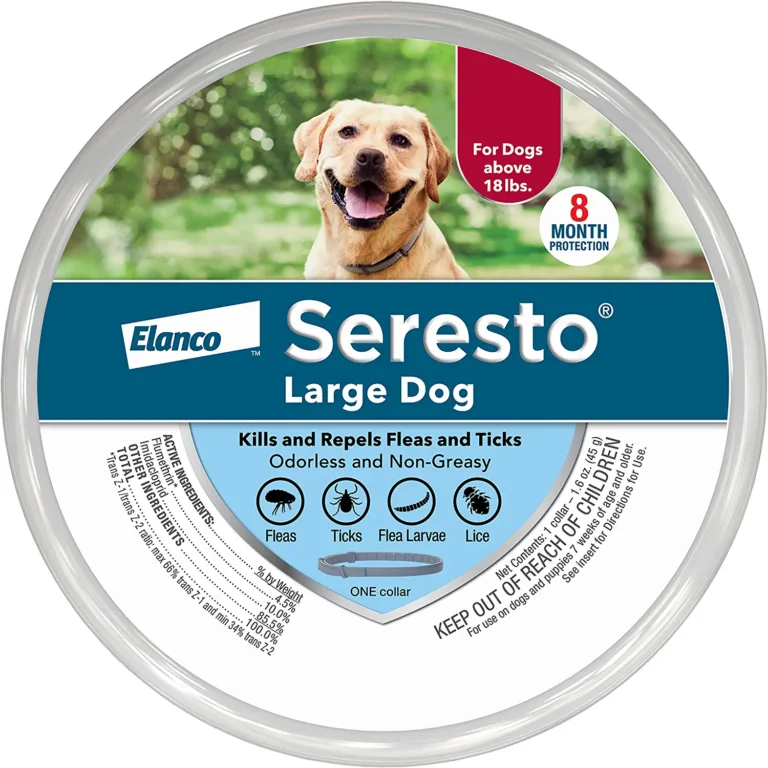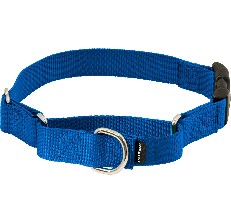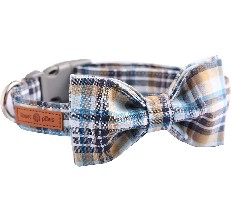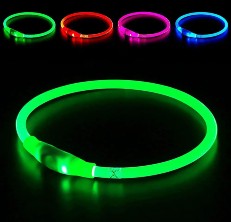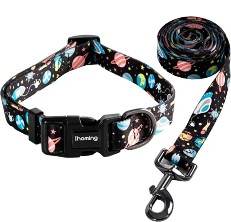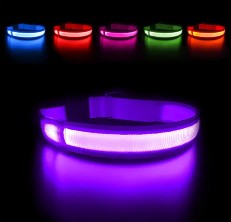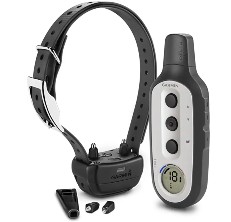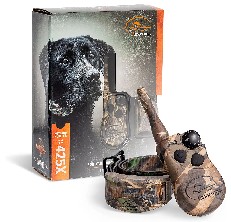- Home
- Gear Categories

The Best Dog Collars of 2024
The best dog collar is the one that's perfect for you and your dog.
18 Nov 2020
We independently research, test, review, and recommend the best products - learn more about our process here. If you buy something through our links, we may earn a commission.
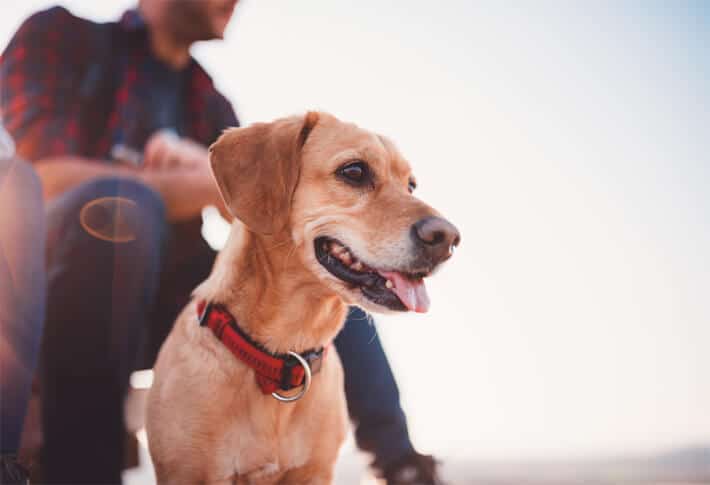
On This Page
- 1 The Best Dog Collars
- 1.1 Tuff Pupper Dog Collar
- 1.2 Pet Resolve Dog Training Collar
- 1.3 Herm Sprenger Dog Collar
- 1.4 SGODA Dog Collar
- 1.5 Seresto Dog Collar
- 1.6 PetSafe Dog Collar
- 1.7 Lionet Paws Dog Collar
- 1.8 BSEEN Dog Collar
- 1.9 Ihoming Leash and Collar Set
- 1.10 Masbrill Dog Collar
- 1.11 Garmin Dog Collar
- 1.12 SportDOG Dog Collar
- 2 Buyer’s Guide: Dog Collars
- 3 People Also Asked
The Best Dog Collars
Best Overall :
Tuff Pupper Dog Collar
For those dogs that polyester collars just won’t cut it for, a leather dog collar is a more durable yet extremely stylish alternative. The Tuff Pupper is crafted from a waterproof, fray-proof, and stink-proof polymer weave that’ll withstand any pup’s adventures.
Most Features :
Pet Resolve Dog Training Collar
Introducing the Pet Resolve Dog Training Collar: a comprehensive solution for teaching up to three dogs desirable behaviors. With a super long 3/4-mile range, waterproof construction, and variable shock and vibration levels, this collar offers reliable training in any environment. Whether it’s for obedience, recall, or managing behavior in public, this top-quality collar ensures effective communication between you and your canine companion.
Forget the limitations of cheap, plastic collars; Pet Resolve is built to last with durable materials designed for outdoor use and tough conditions. Its waterproof construction allows your dog to roam freely, whether running through the rain or swimming in lakes and rivers. Plus, with a rechargeable Li-ion battery, you’ll have peace of mind knowing your collar is always ready for action.
The collar’s variable shock and vibration levels, along with an anti-bark and light for night mode, provide versatile training options suitable for dogs of all sizes and temperaments. Whether you need to reinforce basic commands or address specific behavior issues, Pet Resolve gives you the tools to train effectively and safely. Invest in the best for your furry friend’s training journey and experience the difference that Pet Resolve can make in achieving your training goals.
Pros
- Durable and waterproof
- Versatile function modes
- Effective for behavior modification
Cons
- Collar too large for some dogs
Best Prong Dog Collar :
Herm Sprenger Dog Collar
Prong dog collars can get a bad rap, but high-quality ones like the Herm Springer collar allow you to safely control and train your dog. With a customizable fitting and a quick-release snap, you and your dog will both feel confident on your next walk.
Best Chain Dog Collar :
SGODA Dog Collar
If you like the idea of a metal collar but hesitate to purchase a prong collar, consider a dog chain collar instead. The SGODA collar provides maximum strength and durability, which makes training a breeze for both owner and pet.
Most Convenient :
Seresto Dog Collar
As an alternative to traditional flea and tick prevention methods, the Seresto tick and flea dog collar is a convenient and economical way to keep your dog healthy and happy. It’s also odorless, non-greasy, and starts working within 24 hours.
Most Reliable :
PetSafe Dog Collar
Martingale collars are a great option if you have a pup who pulls a lot on walks. This nylon collar from PetSafe securely and comfortably fits around your dog’s neck, tightening up when they pull and loosening back up when they stop pulling.
Softest Design :
Lionet Paws Dog Collar
If you’re looking for a dog collar that makes a style statement, consider a bowtie dog collar. This handmade one by Lionet Paws is made from 100% cotton that is soft and secure against your dog’s neck.
LED Dog Collar :
BSEEN Dog Collar
Keeping an eye on your pup at all times is important to most dog owners, so the BSEEN LED dog collar is what perfect collar to do just that. Available in a range of different colors and multiple glow modes, you can find the one that suits you and your dog best.
Dog Leash and Collar Set :
Ihoming Leash and Collar Set
With a leash and collar set, you’ll be able to take walks in style. Whether it’s this cute space-themed option by Ihoming or another one of their 14 cute options, these durable and comfortable sets are a must-have item.
Light Up Dog Collar :
Masbrill Dog Collar
Another option to make your dog more visible to you and others is a light up dog collar. This top one from Masbrill is waterproof, lightweight, can be conveniently charged with a USB, and last for 10 hours of use on a single charge.
Dog Training Collar :
Garmin Dog Collar
That’s right. Garmin’s not just for your car anymore. An easy way to train your dog, their dog training collar has 18 different stimulation levels and three training configurations that allow you to customize how you train your dog.
Dog Shock Collar :
SportDOG Dog Collar
Training a hunting or bird dog to respond to commands can be a tricky task, but a dog shock collar can make it easier. The SPORTDog collar is perfect for training out in the field, as it can be submerged up to 25 feet and last 50-70 hours on a single charge.
Buyer's Guide: Dog Collars
It’s obvious that your dog is going to need a collar. Which collar you choose will ultimately depend on what you feel is best for you and your dog, as every dog is different. With that in mind, here’s everything you need to know when choosing the right dog collar.
There are three main things to think about when deciding on the right collar for your dog, and there is usually some dependency between all three factors.
- Fit
- Material
- Type
Fit
The fit of a collar can depend on the type of collar you buy and what material it is made out of. Any collar you buy, regardless of type or material, should be tight enough that it will not get caught on other objects as your dog plays but not tight enough that it poses a potential choking or skin danger to your pup.
If you’re concerned about making sure a collar suitably fits your dog, you can do the two-finger rule, which we explain in more detail below in our “People Also Asked” section. In short, if you can comfortably fit your index and middle finger between your dog’s collar and his or her neck, the sizing of the collar is accurate.
For an even more in-depth explanation of how to fit your dog’s collar correctly, check out this Youtube video by McCann Dog Training.
How accurately your dog’s collar fits becomes especially important depending on how often (or not) you take off his or her collar. There are no hard or fast rules on when and how often you take his or her collar off. Some owners never do, some do at nighttime, and some do during playtime or when their dog is in their home. It ultimately depends on you to make that decision, but generally, people tend to think favorably of taking the collar off at some point. Some even say that taking a dog’s collar off at night is the equivalent of taking your bra off!
Whether for comfort or safety, consider consulting with your vet on how often and when you’ll remove your dog’s collar.
Material
Dog collars are available in many different types of materials, and normally they influence the function and fit of that collar. For example, a collar made out of metal is probably more durable than one made from nylon, but it’s probably also more likely to be more useful for training purposes than a nylon collar. Likewise, statement-piece collars made from cotton, such as bowtie collars, will be softer against your dog’s neck fur and skin but might be more susceptible to general wear and tear.
Another important aspect to consider when it comes to the material is washability. If a collar made from stainless steel gets dirty, it can be easily wiped down. Collars made from nylon, polyester, or cotton might need to be washed in a washing machine or hand washed. Consider your dog’s lifestyle and your desire to take care of his or her collar when deciding on the right material for you and your dog.
Type
There are many types of dog collars available on the market today, and the one you choose might very well depend on its functionality. Is your dog a working dog that needs a collar to help direct his work? Is your dog a couch potato who can get away with a basic collar? Or, does your dog like to join you on your early morning runs and therefore require extra visibility?
Think carefully about how your dog’s collar could aid his or her—and your—lifestyle! That’s the great thing about collars: they don’t have to just be an accessory; they can add great value as well.
Here’s a quick breakdown of the most popular types of collars for dogs, and what you should know about them.
Leather dog collar
A leather dog collar is an extremely durable option when it comes to dog collars. A material designed to withstand rough play, leather collars are not just a great option for super active and playful dogs, but they also are great for those pups with sensitive skin, as they won’t break down or mat the skin on his or her neck. Although traditionally brown, you can find high-quality leather collars in a variety of colors today.
Reflective dog collar
While some dogs prefer snoozing on the couch at night, some may be outside when it’s dark. Whether they’re roaming around in your backyard or hitting the trails with you, you’re going to need to be able to keep eye on them. A reflective dog collar increases your dog’s visibility by acting similarly to roadsigns at night. If light hits the collar, it’ll bounce off and make your dog’s presence more known.
If you’re sold on the idea of a reflective dog collar, Carhartt has one of the best ones on the market.
Prong dog collar
Just hearing the words prong dog collar can be scary for some dog owners. Aren’t those dangerous? Won’t they choke my dog? The word prong can raise these types of questions, but actually, this type of collar can safeguard your dog’s trachea, especially if she or he is a dog that likes to pull on his or her leash when excited or misbehaving. The reason these collars can be safer options is that they distribute the weight and pressure of the pull more evenly across your dog’s neck than more traditional collars, where the pressure remains largely on their throat. If you’re still interested in learning more about prong collars, check out some of the top prong dog collars and this video by Upstate Canine Academy.
Dog chain collar
If prong collars are the training option when it comes to metal dog collars, then dog chains collars are the aesthetic alternative. Because their purpose lies less in functionality than it does in style, it’s a great choice for those dog owners who are interested in the chain look but don’t want prongs. They’re available in traditional silver color, or you can have your dog rock a gold chain if you want. Available in a number of sizes, both a chihuahua and an English mastiff can rock this type of collar (if anyone has a picture of that, send it our way!).
Flea and tick collar
Every dog parent is concerned about keeping their fur baby safe from harmful bugs like fleas and ticks. If trying to trick your dog into taking a pill or getting them to sit still while you apply a topical treatment poses too big a hassle (for you and your dog), then a flea and tick dog collar is a great alternative. Not only is it an easier process, but they also provide protection for a number of months, meaning you can finally ditch the monthly reminders.
Martingale dog collar
Martingale dog collars are similar to prong collars but vary in their material. While prong collars are made almost entirely from metal, a martingale collar is normally made from nylon (like traditional collars). Instead of a buckle, the collar features a chain link that will tighten and loosen as your dog pulls and heals on his or her leash. These collars are a great option for those interested in the functionality of prong collars but prefer the material of more traditional dog collars.
For more information, check out our blog on martingale collars.
Bowtie dog collar
Let’s level with one another here. Bowtie collars don’t provide much in the way of training, but what they do provide is an abundance of cute photos you can take of your pup and share with friends and family. Available in so many cute designs that you can change to match the holidays and seasons, bowtie collars are a fun option to bring out your dog’s personality.
LED dog collar
An LED dog collar works much like a reflective dog collar does, but it definitely provides more visibility. They’re a safe option, but because they can often contain batteries in them, we recommend opting for a reflective collar if your dog is prone to chewing their collar. The coolest thing about them, though, is that they are available in a bunch of fun colors.
Dog leash and collar set
Looking to reduce the hassle of finding both a collar and a leash for your dog? A dog leash and collar set is not only a convenient 2-in-1 option, but it also will ensure that your dog’s collar and leash match! These sets are available in a lot of fun prints and designs and are typically made from more traditional collar materials, such as nylon or cotton.
If you’ve got your heart set on a collar that doesn’t come with a leash, here’s everything you need to know about finding the best dog leash.
Light up dog collar
Are LED dog collars different from light up dog collars? We say so! We’re distinguishing between the two here because they can vary in terms of their durability and the type of light within them. A high-quality light up dog collar should be waterproof, have a long-lasting battery life, and be bright enough to establish your dog’s presence to nighttime drivers.
Dog training collar
If you’re bringing a new puppy into your home or training your dog to perform tasks, then a dog collar specifically designed for training purposes can be a must-have. Most often you’ll receive not only a collar but a remote as well, which will help you guide your dog’s behavior. If you plan to use a dog training collar for water or hunting dogs, make sure it is waterproof, easy to clean, and made from durable materials.
Dog shock collar
Dog shock collars might be as controversial as prong collars, but for experienced dog owners, they can be valuable training assets. The most important feature to look out for in a high-quality shock collar is that it has multiple shock/vibration levels. Each dog will respond differently, so you want to find a comfortable level for your dog.
Main Takeaways
You might not have originally thought that buying a dog collar could be such a personal decision, but the right collar really does depend on what you and your dog’s needs are. Although a personal decision, there still are some main points that everyone should remember:
- Your dog’s collar should fit not too tight or too loose.
- The material and type of dog collar you choose can be influenced by its intended functionality. Buy a collar that suits both you and your dog’s lifestyle.
- Your dog’s collar can be as much of a helpful tool as it can be a statement piece. A great collar is both!
- There is no one right collar. The best dog collar is one that you and your dog feel most comfortable with.
People Also Asked
Q: How long does a dog collar last?
A: Due to their durable material, dog collars turn out to be quite long-lasting. Many dog parents attest to using their dog's collar for up to at least three years. In addition, the washable, weatherproof, and durable material minimizes wear and tear, reducing collar replacement expenses. However, if your canine has outgrown its previous collar, the life span becomes irrelevant and you'll need to purchase a bigger one that'll comfortably fit them.
Q: Where should I place my dog’s collar?
A: A dog’s collar is ideally placed high up on its neck, lying flat against its furs. The buckle is supposed to be tightened on top and positioned right behind its ears.
Q: Should I put a collar on my dog at home?
A: It is up to you whether or not your dog wears their collar at home. However, the agreement among most trainers and parents is that allowing your dog to roam around without a collar at home is much preferable. A collar-free dog at home feels its freedom and recognizes its surroundings as a comfortable space. Moreover, dog parents specifically remove collars from their pups to let them play safely and prevent any accidents that could lead to choking.
Q: Should I take my dog's collar off at night?
A: The general consensus is yes. Not only will it allow your dog total comfort when sleeping, but removing it at night can help protect your pup's neck fur and protect it from breaking off, which could lead to infection and/or irritation.
Q: How tight or loose should a dog collar be?
A: To determine if your dog's collar is too tight or loose around their next, you should try the "two finger rule." If you are able to comfortably slide your index and middle fingers between your dog's neck and collar, then it is properly fitted on them. If you can slide in more than those two fingers, the collar is too loose; if you can't slide in those two fingers (or your fingers are squeezed in), then the collar is too tight and should be loosened up a bit.
Contributors
Notre Dame Police Detection Dog Handler
